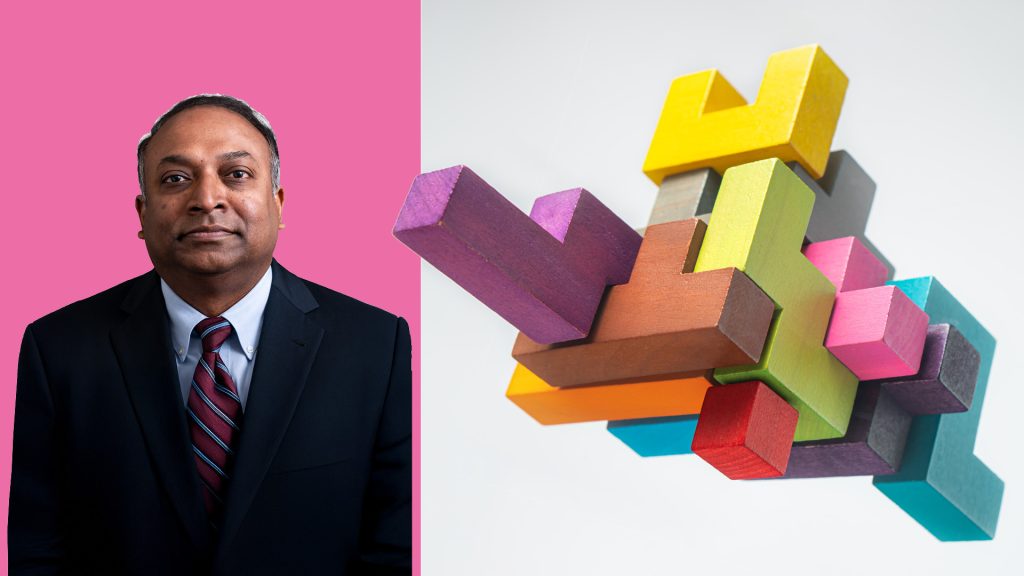We ask five leading AEC software developers and four startups to share their observations and projections for BIM 2.0
Design transformed: 2025 predictions from Vectorworks
Dr. Biplab Sarkar, CEO, Vectorworks
With 2025 in full swing, the AEC industry is at the forefront of a technological revolution, driven by rapid advancements in artificial intelligence (AI), immersive visualisation tools, and a commitment to sustainable design. These innovations are reshaping the tools architects and designers use and influencing how they think about productivity, creativity, and environmental stewardship. Below, I’ll share some insights into the key trends that are set to redefine the industry and recommendations for design leaders for the year ahead.
Artificial Intelligence: a creative ally
AI continues to evolve as a pivotal tool for the AEC industry. It is not a replacement for creative professionals but a powerful assistant that enables them to focus more on design and creativity. In recent years, AI has proven its potential to handle time-consuming tasks such as automating project schedules, optimising workflows, and generating accurate documentation. This allows architects and designers to direct their energy toward conceptual development and problem-solving.
Find this article plus many more in the Jan / Feb 2025 Edition of AEC Magazine
👉 Subscribe FREE here 👈
In 2025, AI is expected to go beyond visualisation and become deeply integrated into the design process. Generative design tools powered by AI will enable professionals to explore innovative forms and solutions that were once unimaginable. These tools will enhance creativity and streamline processes, making it easier to meet tight deadlines and client expectations.
Streamlined BIM workflows
BIM is becoming a standard practice for firms of all sizes, transforming how projects are planned, coordinated, and executed. According to the AIA Firm Survey Report 2024, BIM adoption has surged post-pandemic, with mid-sized and large firms leading the way. However, smaller firms are steadily recognising its benefits, particularly in improving workflows and addressing specific project challenges.
In 2025, BIM will continue to be instrumental in achieving sustainability goals. Tools embedded in BIM software now allow designers to conduct energy efficiency analyses and carbon footprint assessments early in the design phase. This capability is crucial as the industry works toward net-zero emission targets for the building sector by 2040.
Software providers are refining BIM features to prioritise real-time coordination and seamless documentation. The emphasis on usability ensures that BIM tools are accessible, enabling architects to design smarter and more sustainably. Looking ahead, I anticipate a rise in BIM-driven projects that meet high-performance standards and redefine collaboration among multidisciplinary teams.
Enhancing client collaboration
Client expectations for project visualisation have shifted dramatically. While traditional blueprints and 2D documentation remain relevant, immersive technologies such as AR and VR are becoming essential for client engagement. These tools offer an unprecedented level of interactivity, allowing clients to walk through their designs and provide informed feedback virtually.
In 2025, I predict a significant expansion of immersive tools tailored to client collaboration. Many platforms share interactive 3D models, panoramic images, and project files more efficiently in real-time. These tools “wow” clients and foster better decision-making and collaboration. As immersive technologies become more mainstream, they will redefine how architects and clients work together, creating a more transparent and engaging design process.
Designing for sustainability
The urgency of climate change demands a radical shift in how architects and designers approach their work. According to the World Meteorological Organisation’s 2024 State of Climate Services report, the past decade has been the warmest, highlighting the need for immediate action. Sustainability has transitioned from being a priority to an industry imperative.
Innovative approaches like wood construction and adaptive reuse are gaining traction as effective ways to reduce a building’s environmental impact. Technologies such as cross-laminated timber (CLT) offer a sustainable alternative to concrete, while adaptive reuse preserves existing structures, conserving resources and minimising waste.
Tools like the Vectorworks Embodied Carbon Calculator enable designers to measure and reduce the carbon footprint of their projects. By integrating data-driven decision-making into the design process, architects can make more sustainable material choices and meet stringent climate goals. Looking ahead, I anticipate the introduction of new metrics and sustainability dashboards that will allow designers to visualise the environmental impact of their decisions in real time, further solidifying sustainability as a core tenet of architectural practice.
Evolving roles and responsibilities
The technological advancements outlined above are not just reshaping tools but also redefining roles within the AEC industry. Architects and designers are increasingly becoming collaborators, facilitators, and problem solvers tasked with balancing creativity, functionality, and sustainability. This shift requires a holistic approach to design that considers the needs of clients, the environment, and future generations.
For firms, this means investing in continuous learning and upskilling. Professionals must stay abreast of new technologies and methodologies to remain competitive. As the industry evolves, I foresee a growing emphasis on interdisciplinary collaboration, with architects, engineers, software developers, and sustainability experts working together to create innovative solutions.
Advice to leadership
To prepare for the future, design leaders should prioritise evolving their tech stack, optimising workflows, and cultivating staff skills to meet emerging industry challenges. Investing in interoperability and cloud-based collaboration ensures seamless data exchange and resilience while integrating AI and machine learning can automate repetitive tasks and enhance design optimisation. Embracing sustainability tools to track energy efficiency and carbon footprints will align with growing client and regulatory demands. Workflows should be streamlined for agility by adopting unified processes, enabling large-scale design iteration, and leveraging technologies like digital twins and data-driven design tools to refine outcomes efficiently.
Simultaneously, fostering staff expertise will be critical. Cross-disciplinary knowledge in areas like engineering and environmental science can enhance collaboration, while training in emerging technologies such as AR/VR, BIM, and AI will ensure teams remain competitive. Soft skills like adaptability, communication, and leadership development are equally important as teams grow more diverse. Cultivating sustainability expertise and preparing for leadership transitions will further position firms for long-term success.
Embracing innovation to shape tomorrow
The AEC industry stands at a transformative juncture, with developing technologies and sustainability goals paving the way for a brighter future. By embracing these trends, architects and designers can push the boundaries of what’s possible, creating innovative, functional, and environmentally responsible spaces.
Finally, staying ahead of industry trends is essential. Monitoring evolving regulations, leveraging predictive analytics, and understanding client expectations can inform strategic decision-making. These strategies collectively enable leadership to produce and deliver innovative, impactful designs that address both present needs and future possibilities, and ensure your firm remains agile in a dynamic market. To see how we’re keeping pace with industry demands, visit our public roadmap), where we share insights into the innovations we’re prioritising. As we progress into 2025, I am excited to witness how these advancements will shape the industry and the built environment. The journey ahead promises challenges but also immense potential for creativity, collaboration, and meaningful impact. Together, we can redefine the future of design, leaving a lasting legacy for generations
.
Read more opinions
The startups
 Breaking the compromise in digital project delivery
Breaking the compromise in digital project delivery
Erik de Keyser, co-founder, Qonic
 Beyond Buzzwords: the real future of BIM
Beyond Buzzwords: the real future of BIM
Paul O’Carrol, CEO, Arcol
 Beyond Legacy Thinking
Beyond Legacy Thinking
Altaf Ganihar, founder and CEO, Snaptrude
 BIM 2.0: why it’s time to reinvent the tools that power the built world
BIM 2.0: why it’s time to reinvent the tools that power the built world
Amar Hanspal, CEO, Motif
The established players
 Embracing AI and Boosting Sustainability Across Project Lifecycles
Embracing AI and Boosting Sustainability Across Project Lifecycles
Daniel Csillag, CEO, Graphisoft
 AI: Our Generation’s Paradigm Shift
AI: Our Generation’s Paradigm Shift
Tom Kurke, VP, Ecosystems & Venture, Bentley Systems
 The Future of BIM: Harnessing the Power of Data
The Future of BIM: Harnessing the Power of Data
Amy Bunszel, executive VP of AEC Solutions, Autodesk

Unlocking the Future of BIM with Interoperability
Mark Schwartz, SVP, Trimble






